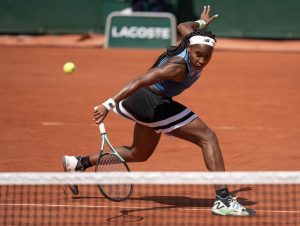The inaugural ATP Cup has come and gone. Forty-three ties, one hundred and twenty-nine tennis matches, across three cities, played by twenty-four countries. It certainly has made an impact on the beginning of the 2020 ATP season.
There have been opinions expressed across the tennis world on whether the impact is positive or negative. Almost certainly, with any event, the truth lies somewhere between. As it is new though, and potentially open to change, it would be a worthwhile exercise looking into the pros and cons of the ATP Cup.
ATP Cup Review
The Broad Spectrum of Quality Tennis on Offer
The tournament brought the very best tennis players in the world to one event, except Roger Federer. As a result, it felt like the new season started with a real bang.
It’s quite an unusual sight these days to see two top players play each other outside of the Masters or Grand Slam events. Even the Davis Cup in recent years saw the top players almost take it in rotation to appear in. Therefore, to see the likes of Djokovic vs Nadal in Week 1 was an exciting and fitting finale for a tournament.
Early on though there were far more matches that were questionable. The value of seeing Aleksandre Metreveli get double bagelled or Viktor Durasovic struggle against Karen Khachanov and Stefano Travaglia could be questioned. Although the lesser players are likely to be very grateful for the opportunity to play on a big stage and have the chance of winning some good ranking points.
Did the Ranking Points System Work?
The Davis Cup has the tradition, The Laver Cup has the glitz and glamour, the ATP Cup rewards players through ranking points and prize money. As discussed earlier this does seem to have enticed almost everyone to take part.
As always though, there are issues of fairness to take into account. It is very difficult to balance reward and incentive with keeping the integrity of the rankings for all. This was initially discussed on LWOS in October but it appears that some people missed the news until this week.
This tweet from former American top 10 player and Hopman Cup winner Mardy Fish seems to encapsulate some feelings from within the game.
So ATP Cup is worth more than winning a 500 event AND counts for an extra tournament on your ranking AND only 2 players from a country can play??? 🤔 🧐
— Mardy Fish (@MardyFish) January 12, 2020
There were some big winners from this decision. The aforementioned Metreveli rose 120 places thanks to his 15 ranking points earned by defeated Franco Roncadelli of Uruguay (current ITF ranking #1779). Dimitar Kuzmanov also rose 72 places due to winning 30 ranking points, though he did defeat a decent player in Steve Darcis at least.
However, it can be argued that those players are basically winning big ranking points as a result of one of their compatriots being an excellent player. Nikoloz Basilashvili and Grigor Dimitrov can certainly claim an assist to those points. It’s doubtful that the players around these players find it particularly fair either.
Too similar to the new Davis Cup?
There was quite the sense of deja vu in the week. It was only in October that the newly revamped Davis Cup took place. The fact that the format of the ties was almost exactly the same meant that it didn’t feel “new.” Indeed, when Spain named exactly the same squad that had just dominated the Davis Cup, it was no surprise to see them progress to the final.
Surely it makes sense to either merge the competitions or provide a point of difference in one or other. Tennis is made all the richer by including team competitions. The support and level of emotion is a step above the vast majority of the rest of the tennis calendar. However, having replica tournaments only a couple of gameweeks apart doesn’t make any sense to a lot of people.
An Unusual Experience for Supporters
The fan experience seemed to be catered for very well though. Australia’s sporting culture and experience in promoting events made for a welcoming home for the tournament. The decision to host the tournament over three cities (and differing timezones) was divisive though.
Spectator numbers, however, were reported to be good. Not every venue was full at every point, far from it in some cases. The total of attendees though was up on what would usually be seen in Australia at this time of year.
If you were able to watch on TV or via streaming then it was easy to catch some ATP Cup. It spanned a long time period and matches were scheduled for one court at each venue. For fans onsite and the players who moved between time zones within the same tournament it wasn’t ideal.
The Ideal Preparation for the Australian Open?
It certainly makes sense to keep competition to Australia at this time of year. Obviously, it is summer Down Under at the moment and with the Australian Open around the corner players want to be around there to acclimate. The players should also be praised for their ability to sense the mood of the country in such a difficult time. The decision to come together to help Australia with money going towards the fighting of the fires ripping through the country was well-judged and well received. A special mention to Nick Krygios for instigating the money-per-ace concept that became the basis of the ATP offer.
I’m kicking off the support for those affected by the fires. I’ll be donating $200 per ace that I hit across all the events I play this summer. #MoreToCome #StayTuned
— Nicholas Kyrgios (@NickKyrgios) January 2, 2020
However, there is a big question as to whether an intense competition like this is the ideal preparation for a Grand Slam. For the best players (who are usually on the best teams) they can be playing high-intensity, emotionally-draining matches in close proximity in the week before a Grand Slam. The fact that Nadal felt that he couldn’t play the deciding doubles rubber shows how much it can take out of them. Alex De Minaur and Daniil Medvedev are big-name withdrawals from events that follow the ATP Cup and that is probably sensible planning.
The Future of the ATP Cup
Moving forward it will be interesting to see if there are any tweaks to the competition. Rafael Nadal has led renewed calls for a merger between Davis Cup and ATP Cup. This certainly sounds sensible, achieving agreement is another matter.
There must surely be a market for a mixed-gender country-based team competition in the calendar also. The Hopman Cup was axed for the ATP Cup, but that event was unique, and certainly had its fans. The marketing opportunity for an event like that appears to be huge. Again, politics of tennis associations, and calendar pressures, may be a stumbling block.
There was a lot of exciting, heart-in-mouth tennis played last week. It was an enjoyable event to watch. Serbia were rightful champions and it was a pleasure to see Novak Djokovic get the fan-support he often deserves. However, there are certainly valid questions to be asked about its place in the calendar. ATP Cup 2021 planning and preparation begins now, who knows what the event will look like.






